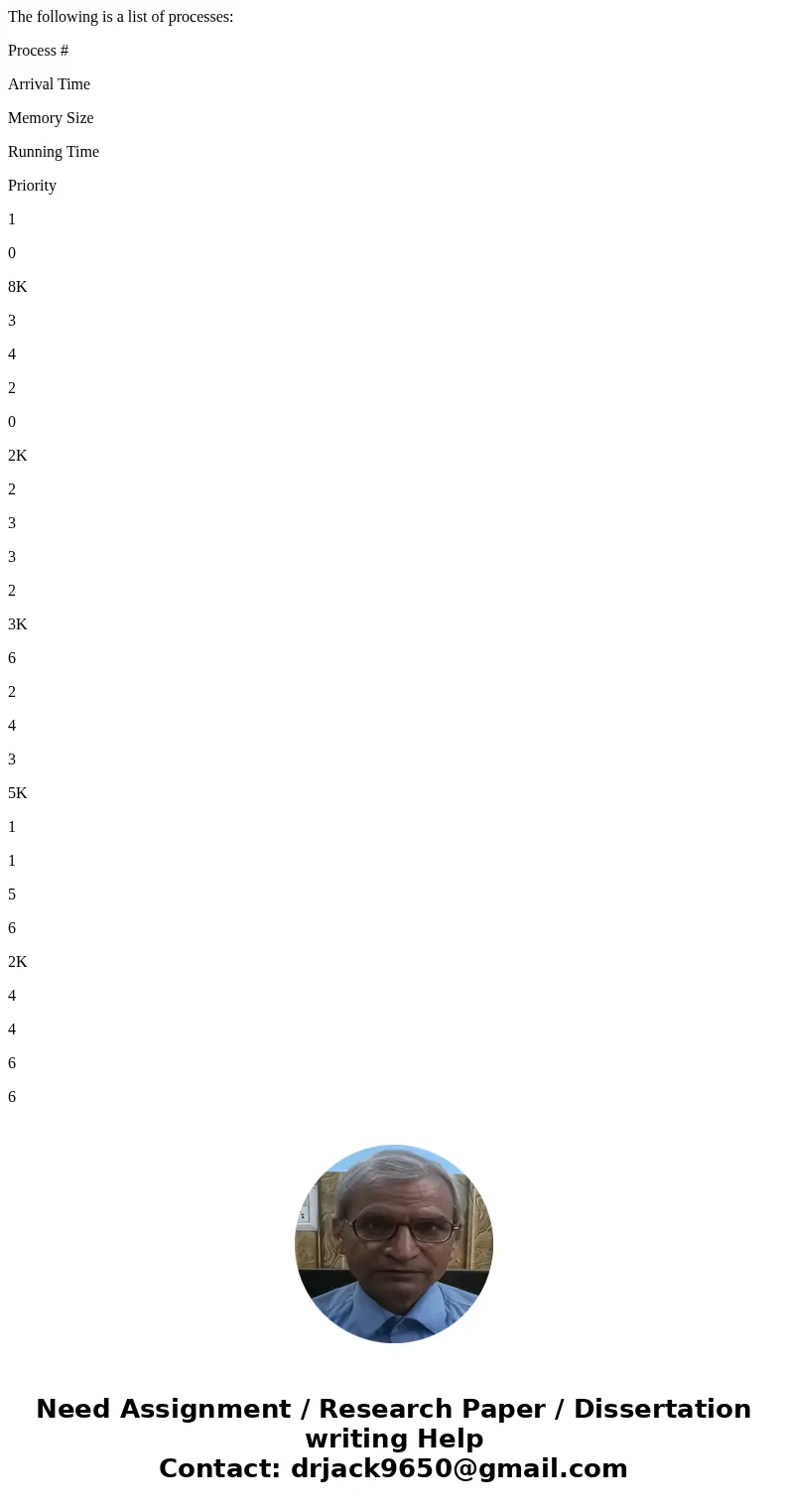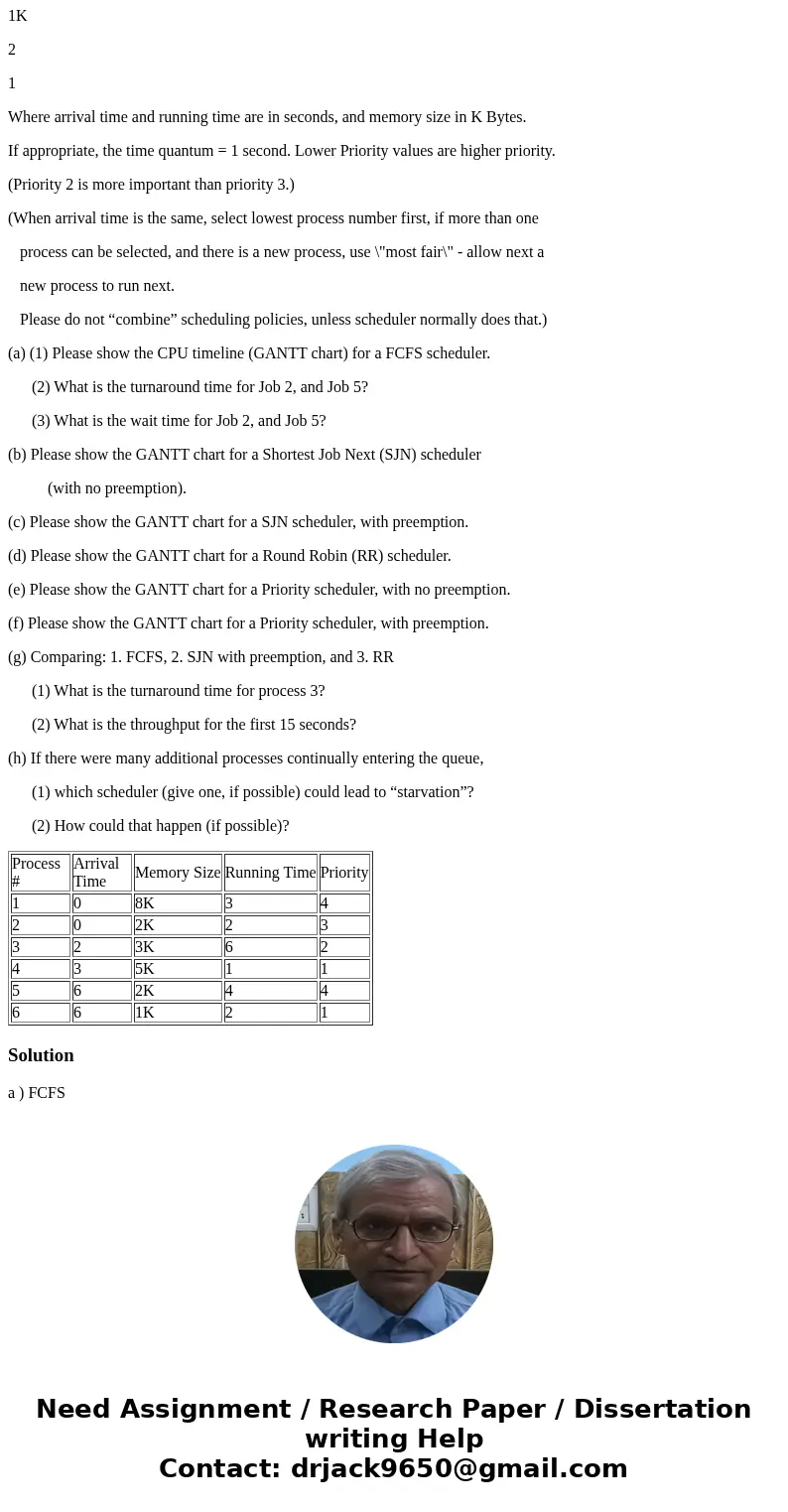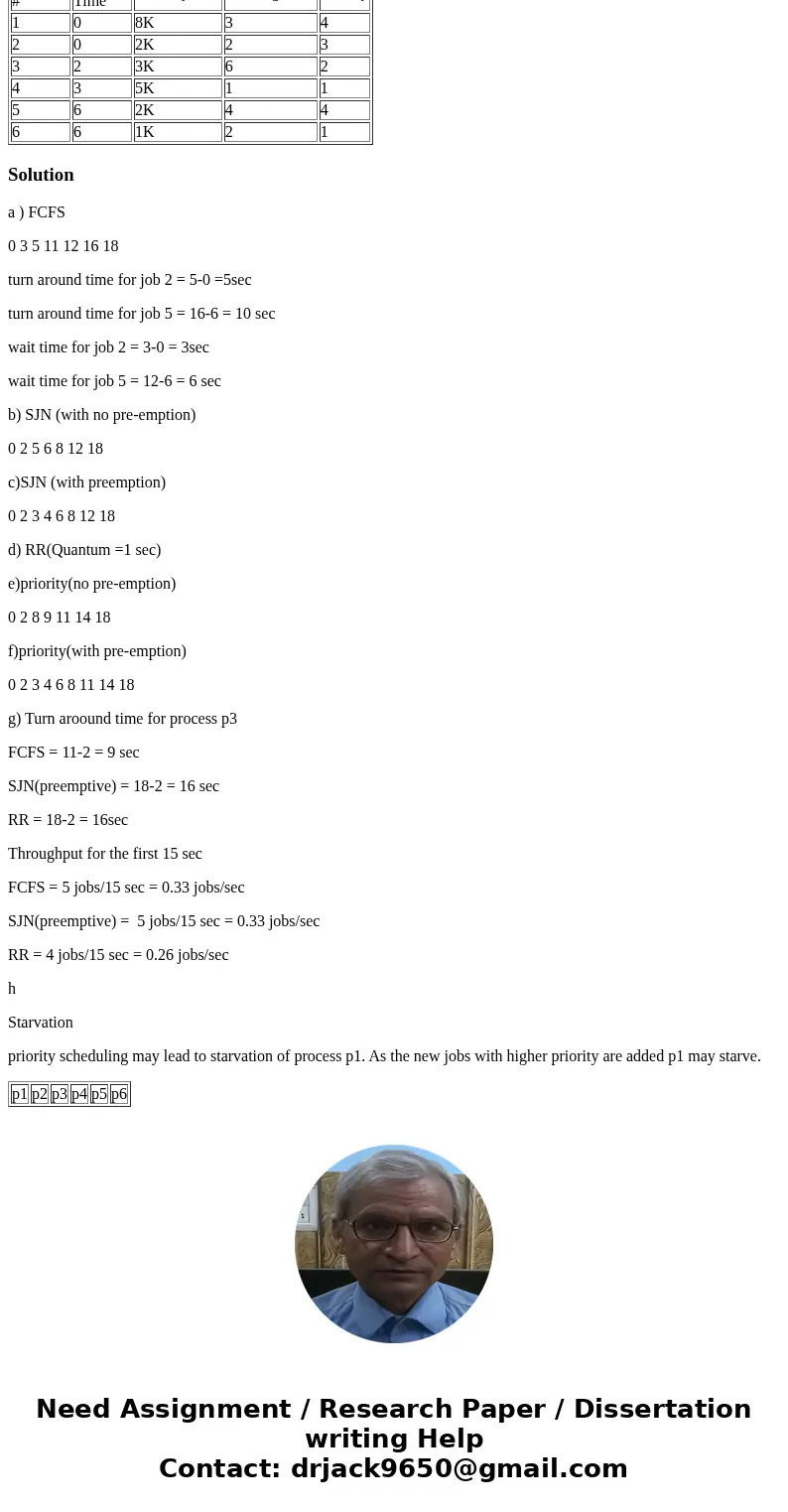The following is a list of processes Process Arrival Time M
The following is a list of processes:
Process #
Arrival Time
Memory Size
Running Time
Priority
1
0
8K
3
4
2
0
2K
2
3
3
2
3K
6
2
4
3
5K
1
1
5
6
2K
4
4
6
6
1K
2
1
Where arrival time and running time are in seconds, and memory size in K Bytes.
If appropriate, the time quantum = 1 second. Lower Priority values are higher priority.
(Priority 2 is more important than priority 3.)
(When arrival time is the same, select lowest process number first, if more than one
process can be selected, and there is a new process, use \"most fair\" - allow next a
new process to run next.
Please do not “combine” scheduling policies, unless scheduler normally does that.)
(a) (1) Please show the CPU timeline (GANTT chart) for a FCFS scheduler.
(2) What is the turnaround time for Job 2, and Job 5?
(3) What is the wait time for Job 2, and Job 5?
(b) Please show the GANTT chart for a Shortest Job Next (SJN) scheduler
(with no preemption).
(c) Please show the GANTT chart for a SJN scheduler, with preemption.
(d) Please show the GANTT chart for a Round Robin (RR) scheduler.
(e) Please show the GANTT chart for a Priority scheduler, with no preemption.
(f) Please show the GANTT chart for a Priority scheduler, with preemption.
(g) Comparing: 1. FCFS, 2. SJN with preemption, and 3. RR
(1) What is the turnaround time for process 3?
(2) What is the throughput for the first 15 seconds?
(h) If there were many additional processes continually entering the queue,
(1) which scheduler (give one, if possible) could lead to “starvation”?
(2) How could that happen (if possible)?
| Process # | Arrival Time | Memory Size | Running Time | Priority |
| 1 | 0 | 8K | 3 | 4 |
| 2 | 0 | 2K | 2 | 3 |
| 3 | 2 | 3K | 6 | 2 |
| 4 | 3 | 5K | 1 | 1 |
| 5 | 6 | 2K | 4 | 4 |
| 6 | 6 | 1K | 2 | 1 |
Solution
a ) FCFS
0 3 5 11 12 16 18
turn around time for job 2 = 5-0 =5sec
turn around time for job 5 = 16-6 = 10 sec
wait time for job 2 = 3-0 = 3sec
wait time for job 5 = 12-6 = 6 sec
b) SJN (with no pre-emption)
0 2 5 6 8 12 18
c)SJN (with preemption)
0 2 3 4 6 8 12 18
d) RR(Quantum =1 sec)
e)priority(no pre-emption)
0 2 8 9 11 14 18
f)priority(with pre-emption)
0 2 3 4 6 8 11 14 18
g) Turn aroound time for process p3
FCFS = 11-2 = 9 sec
SJN(preemptive) = 18-2 = 16 sec
RR = 18-2 = 16sec
Throughput for the first 15 sec
FCFS = 5 jobs/15 sec = 0.33 jobs/sec
SJN(preemptive) = 5 jobs/15 sec = 0.33 jobs/sec
RR = 4 jobs/15 sec = 0.26 jobs/sec
h
Starvation
priority scheduling may lead to starvation of process p1. As the new jobs with higher priority are added p1 may starve.
| p1 | p2 | p3 | p4 | p5 | p6 |



 Homework Sourse
Homework Sourse